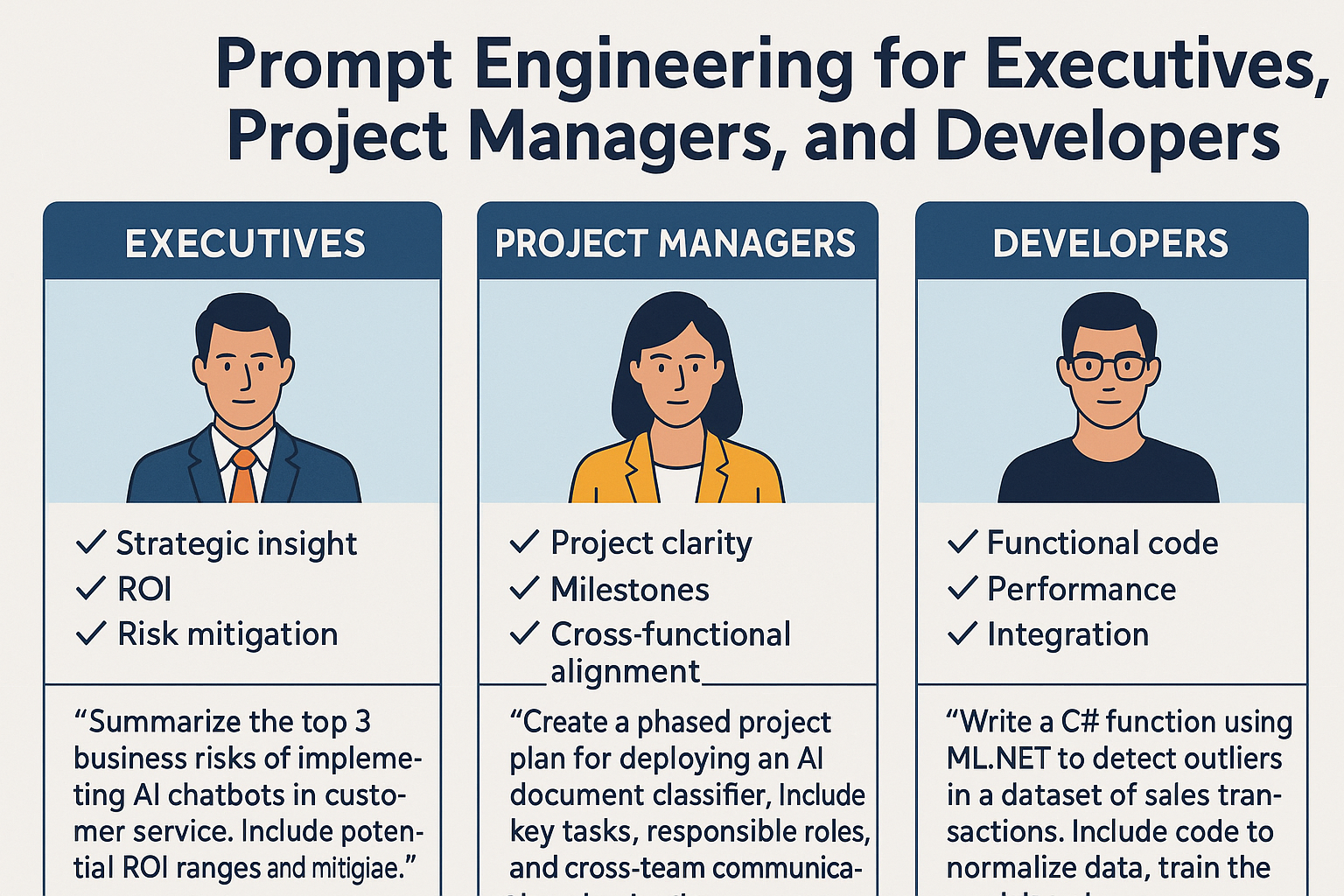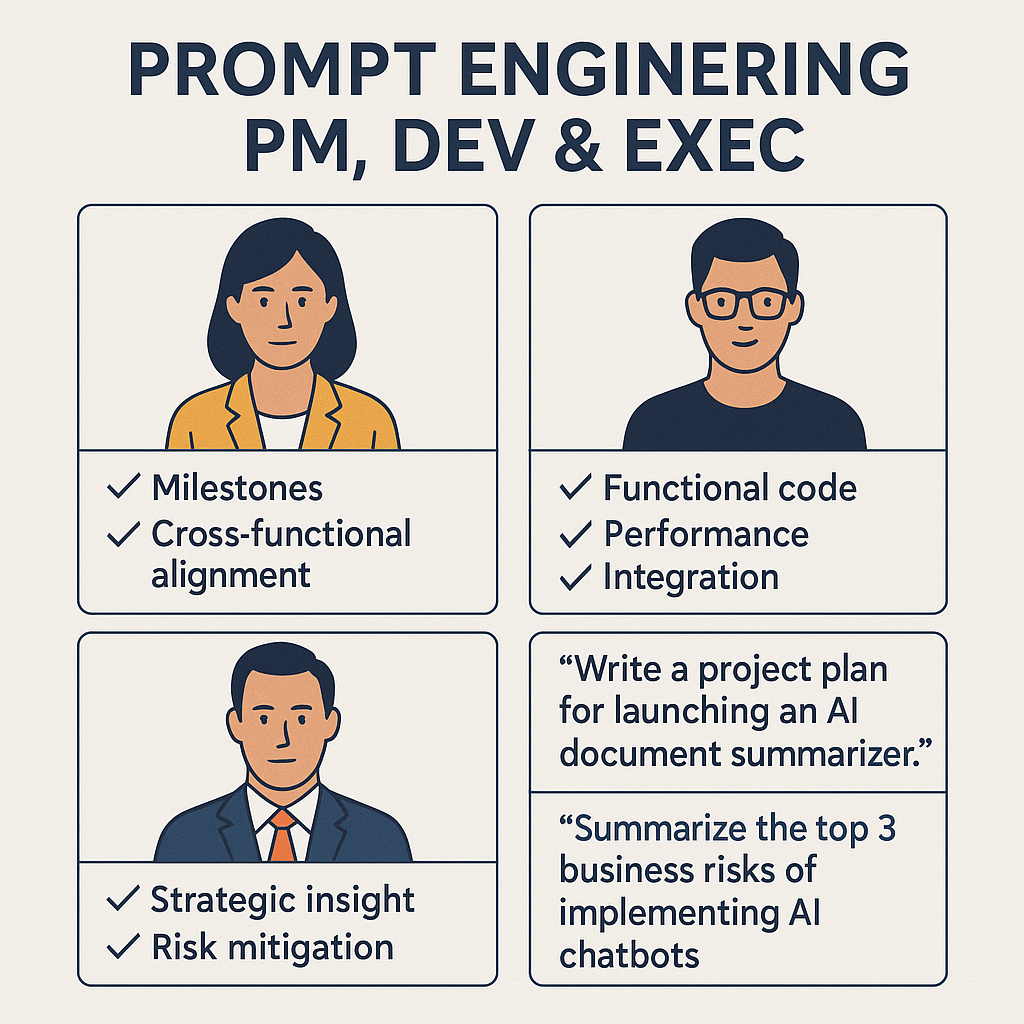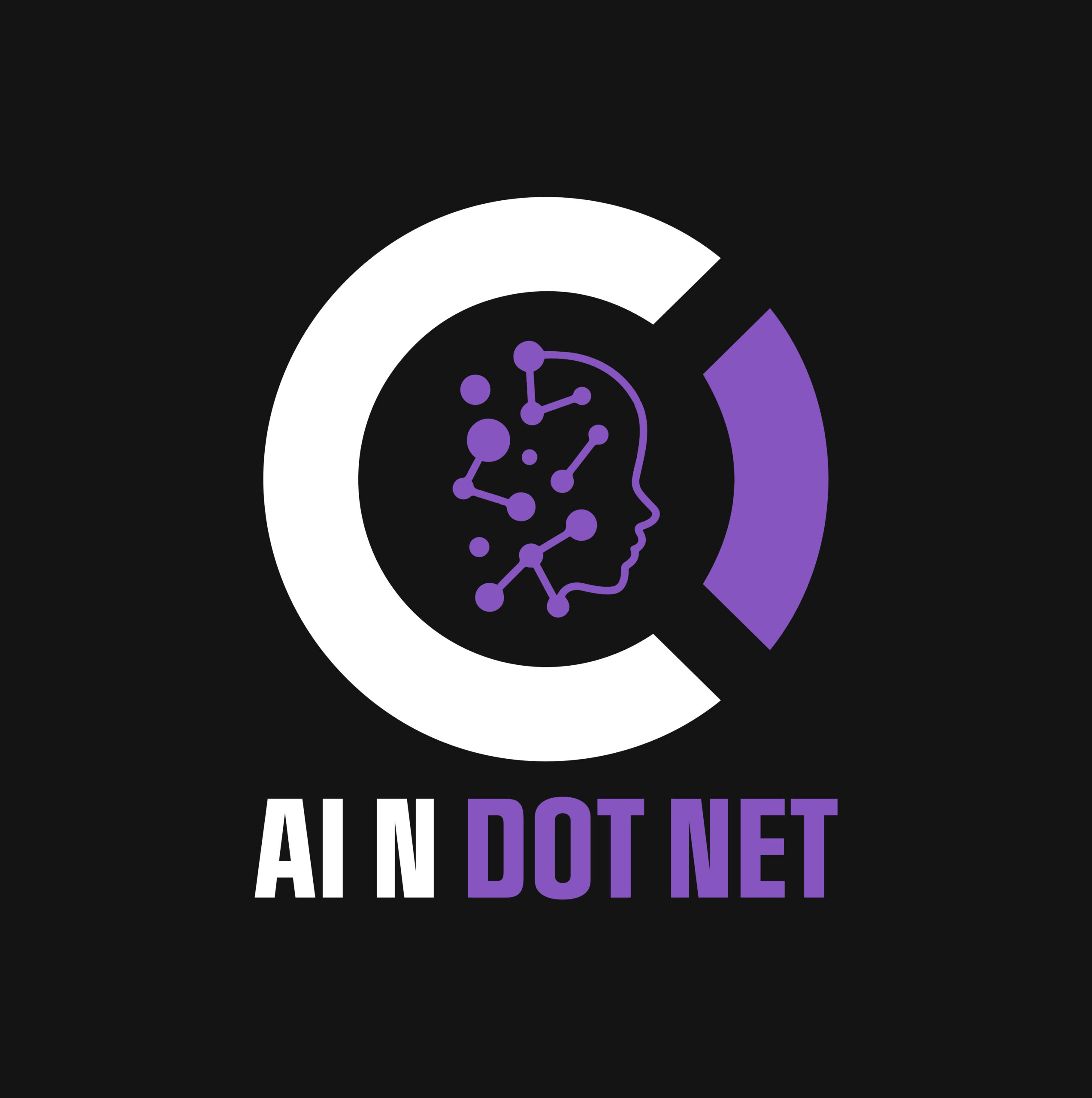Learn how to tailor AI prompts for each role in your organization—executives, PMs, and developers—to get smarter, faster results from AI tools like ChatGPT and Microsoft Copilot.
🔍 Why Role-Based Prompt Engineering Matters in Enterprise AI
In today’s AI-driven workplace, the quality of your prompts determines the quality of your outcomes. But most businesses fail to realize one thing: AI prompts should not be the same for everyone.
Prompt engineering isn’t just about wording. It’s about context, clarity, and role-specific needs. A CTO needs a different answer than a developer. A project manager needs timelines, not code. That’s where role-based prompt engineering becomes a game-changer for productivity and decision-making.
🧠 What Is Role-Aware Prompt Engineering?
Role-aware prompt engineering is the practice of designing prompts that match a person’s job function, mental model, and goals. It ensures that AI tools respond in a way that supports decision-making, technical execution, or project planning—depending on the user.
Done right, it:
- Increases AI adoption across departments
- Improves prompt quality and relevance
- Saves time by reducing back-and-forth refinement
🧱 How to Write Better Prompts for AI Tools Based on Role
Let’s explore how to optimize AI prompts for three essential enterprise roles: executives, project managers, and developers.

👨💼 Prompt Engineering for Executives
Goal: Strategic insight, ROI, and risk mitigation
Prompt Style: High-level, concise, and focused on business outcomes
Prompt Template:
Summarize the top 3 business risks of implementing AI chatbots in customer service for a mid-sized financial institution. Include potential ROI ranges and executive-level mitigation strategies.
Tips:
- Use the word “summarize” or “highlight” to request brevity
- Ask for risks, benefits, and high-level implications
- Avoid technical jargon or implementation detail
🧩 Prompt Engineering for Project Managers
Goal: Project clarity, milestones, cross-functional alignment
Prompt Style: Step-by-step guides, stakeholder maps, timelines
Prompt Template:
Create a phased project plan for deploying an AI document classifier using Azure AI and ML.NET. Include key tasks, responsible roles, and cross-team communication checkpoints.
Tips:
- Ask for RACI matrices, Gantt-style timelines, and blockers
- Emphasize dependencies and scheduling
- Request deliverables by phase or sprint
💻 Prompt Engineering for Developers
Goal: Functional code, performance, and integration
Prompt Style: Precise, tool-specific, and implementation-ready
Prompt Template:
Write a C# function using ML.NET to detect outliers in a dataset of sales transactions. Include code to normalize data, train the model, and evaluate accuracy.
Tips:
- Name the framework, programming language, and objective
- Ask for performance tradeoffs, testing methods, or optimization
- Provide sample data formats if needed
🧰 Prompt Engineering Starter Kit: Enterprise AI Prompts by Role
| Role | Prompt Starter |
|---|---|
| Executive | “Summarize the impact of…” |
| PM | “Break down the steps required to…” |
| Developer | “Write code that does X using Y…” |
Use this table to standardize prompt patterns across teams.
📈 Boosting AI Adoption with Role-Specific Prompts

When enterprise AI tools return useful, role-relevant answers, adoption skyrockets. But when prompts are too vague or misaligned with job function, users get frustrated—and blame the AI.
To avoid this:
- Build role-specific prompt templates into your documentation
- Train teams on how to phrase their questions
- Encourage feedback loops to improve prompt quality over time
🧭 Final Takeaway: The Right Prompt for the Right Role
Enterprise AI success doesn’t just come from better tools—it comes from better communication with those tools. And communication starts with role-aware prompts.
By tailoring prompts to match the way executives, project managers, and developers think and work, you’ll unlock:
- More accurate AI results
- Higher satisfaction with AI tools
- Faster time to value from your AI investments
Stop writing one-size-fits-all prompts.
Start engineering them with intent.
Want to stay ahead in applied AI?
📑 Access Free AI Resources:
- Download our free AI whitepapers to explore cutting-edge AI applications in business.
- Check out our free AI infographics for quick, digestible AI insights.
- Explore our books on AI and .NET to dive deeper into AI-driven development.
- Stay informed by signing up for our free weekly newsletter
